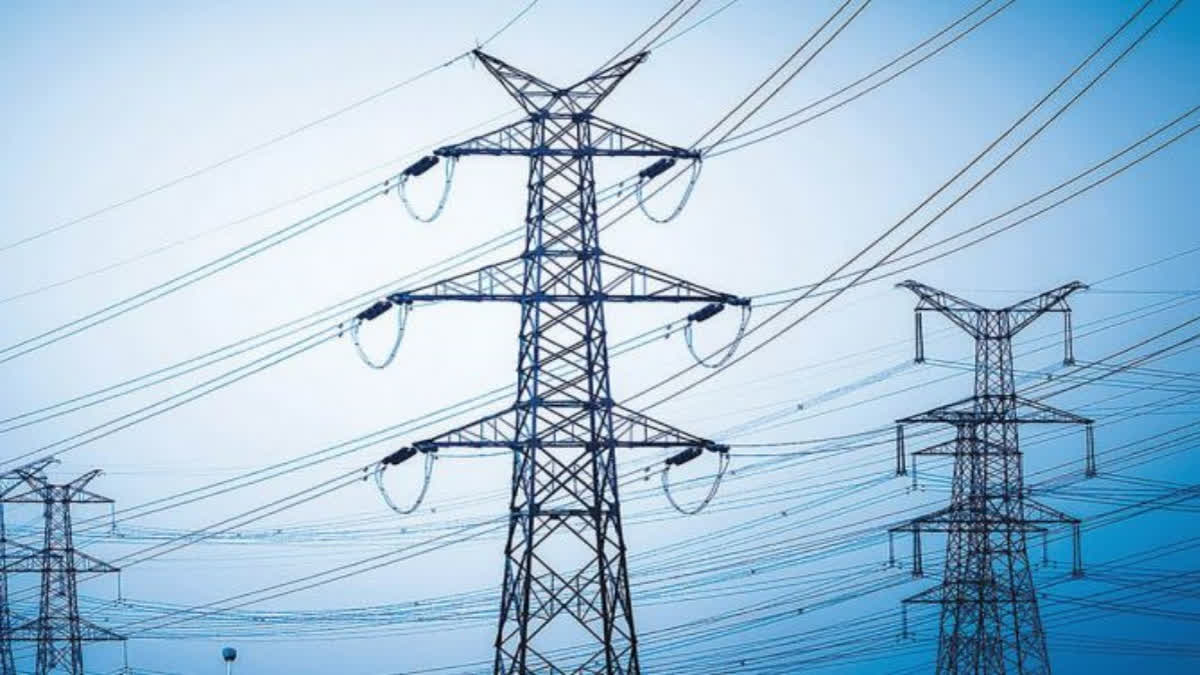New Delhi: Despite reports in some sections of the Bangladesh media suggesting that India has approved the use of its power grid by the eastern neighbour to import electricity from Nepal, the fact of the matter is that New Delhi is withholding its consent pending certain conditions.
“We have not yet given any approval till now to Bangladesh to use India’s grid to import power from Nepal,” a highly placed Indian official told ETV Bharat. “Though there was an agreement that provided for India allowing the use of its grid for transmission of power from Nepal to Bangladesh, we are yet to give any such approval,” the official said.
The official’s comments came after a report in the Business Post news website of Bangladesh claimed that India’s eastern neighbour would start importing power from the Himalayan nation from the end of April following New Delhi’s approval for the use of its grid.
The Bangladesh news website claimed that following long-time planning, Bangladesh is finally on the verge of starting the process of importing 40 megawatts (MW) of hydroelectricity from Nepal, after facing prolonged delays primarily due to the wait to get India's full permission to use its grid.
“With all preparations now complete, Bangladesh Power Development Board (BPDB) has confirmed that approval from India has been secured,” the report claimed. “A contract in this regard is expected to be finalised in the first phase this month. If all goes according to plan, Nepal’s hydroelectricity offered at a minimum price will be seamlessly integrated into Bangladesh's grid by the end of April, according to BPDB officials.”
What is the deal between India, Nepal and Bangladesh on power trade?
During Nepal Prime Minister Pushpa Kamal Dahal’s visit to New Delhi at the beginning of June last year, he and his Indian counterpart Narendra Modi unveiled plans for India to facilitate the export of hydropower from Nepal to Bangladesh. Dahal said a beginning will be made by exporting 50 MW.
This initiative aligns with India’s efforts over the past few years to enhance energy connectivity with Bangladesh, Bhutan, Nepal and Sri Lanka through electricity transmission networks and petroleum pipelines. Reports suggest that there’s also an unstated goal of reducing these neighbouring countries’ reliance on China.
Electricity trade with neighbouring countries was governed by bilateral agreements. The issuance of new Cross-Border Trade of Electricity (CBTE) guidelines in 2018 has laid the groundwork for new partnerships. Developed through extensive consultation with stakeholders, these guidelines permit neighbouring countries to buy and sell electricity via India’s grid and engage in India’s power exchanges, according to sources.
Why is India important for power export from Nepal to Bangladesh?
Nepal and Bangladesh have never engaged in electricity trade. However, they are currently discussing tariffs for exporting 40MW of power from Nepal to Bangladesh using India’s existing transmission infrastructure.
Bangladesh is interested in purchasing more electricity from Nepal, aligning with Nepal’s desire to export more power. To facilitate this, both countries are seeking a dedicated transmission line that would pass through India, the country that geographically separates them. It is crucial to get India’s cooperation to establish this dedicated power line.
Nepal suggested constructing the 400kV Inaruwa (Duhabi-Purnia, Bihar) and 400kV New Lamki (Dodhara-Bareli, Uttar Pradesh) cross-border power lines through a joint venture company involving organisations from both countries.
Nepal’s idea was to replicate the model used for the New Butwal-Gorakhpur Cross Border Transmission Line where the Indian segment is being constructed by a joint venture between the Nepal Electricity Authority and the Power Grid Corporation of India.
What India wants to facilitate power trade between Nepal and Bangladesh
According to the proposed trilateral agreement, Nepal will supply hydropower to Bangladesh using India's high-voltage transmission lines. Initially, Nepal will send 40 MW to Bangladesh through India’s Baharampur-Bheramara cross-border transmission line, drawing electricity from Nepal's 900 MW Upper Karnali hydropower project.
In exchange, India wants Bangladesh to allow it to build transmission lines connecting India’s northeastern states. Bangladesh has proposed to secure 500 MW from a single hydropower project in Nepal on a long-term basis. According to industry experts, India, which operates the world’s largest integrated grid, stands to benefit significantly. Given Nepal’s vast hydropower resources and the increasing demand for renewable energy in South Asia, India’s grid could serve as a key channel for distributing electricity across the region.
Which entity is responsible for giving approval for the use of the Indian grid for the supply of power from Nepal to Bangladesh?
The Central Electricity Authority (CEA) in India is responsible for overseeing various aspects of the country’s electricity sector, including international matters related to power trade. When it comes to cross-border electricity trade between India and neighbouring countries, the CEA plays a role in formulating guidelines, granting permissions and ensuring that electricity trading is conducted in a safe, reliable and regulated manner. Additionally, the Ministry of Power and the Central Electricity Regulatory Commission (CERC) are the key regulatory bodies that help oversee cross-border electricity trading and ensure compliance with rules and agreements.
For specific agreements and frameworks related to power trading between India and neighbouring countries, the CERC sets guidelines, while the CEA ensures technical compliance and coordination. Moreover, entities like the Power Grid Corporation of India (PGCIL) and other transmission utilities play a role in facilitating the physical transmission of electricity across borders.
So, where do things stand now?
It is still unclear whether Bangladesh will give India access to its territory for building transmission lines to supply to the northeastern states. With elections underway in India now, one will have to wait for Bangladesh Prime Minister Sheikh Hasina’s proposed visit to India.
Read more: B'desh Foreign Secy Urges Swift Conclusion Of Tripartite Power Agreement With India And Nepal



